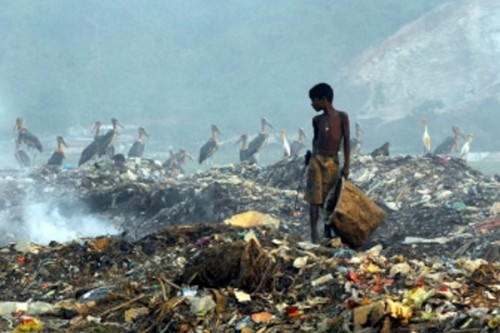Guwahati has one of world's highest black carbon pollution levels

Guwahati, Oct 23 (IANS) A large population in Assam is breathing toxic air, with Guwahati topping the charts of the highest polluted cities in the state.
The Delhi-based Centre of Science and Environment (CSE) had recently warned that the problem of air pollution is growing steadily in Assam and also in other northeastern states, posing a threat to the concept of pristine blue skies and clean air in this region.
In the National Air Quality Monitoring Programme (NAMP), five 'non-attainment' cities have been identified in Assam, namely, Guwahati, Nagaon, Silchar, Sivasagar, and Nalbari. The pollutant levels in these cities have exceeded the prescribed air quality standards.
Accordingly, the National Clean Air Programme (NCAP) has been initiated to develop action plans to bring down the fine particulate matter (like PM10 and PM2.5) by 20-30 per cent within a stipulated timeframe.
An emission inventory study has been initiated for Guwahati, wherein the contribution of pollutants from different sectors like commercial, transportation, domestic and industrial sources will be estimated.
The high level of air pollution resulting from massive motorisation, traffic congestion, and use of solid fuel are causing a public health crisis in the hilly terrains and valleys of the northeastern states.
What is worse is that although the air quality has declined gradually, it has failed to draw public attention yet. But, in the winter, air pollution in Guwahati is as bad as in many cities in Uttar Pradesh. Pollution is high even in smaller cities too.
Parthankar Choudhury, Professor of Ecology and Environmental Science, Assam University, Silchar, said that over the years, the concentration of particulate matter in the ambient air is on the rise, which is alarming.
"More research projects need to be carried out on the respiratory distress and other health ailments caused due to air pollution," he added.
In the present scenario, various construction works are going on in and around Guwahati, which may be responsible for the increase in concentrations of PM10.
This increase, however, is temporary in nature because, after the completion of the construction works, e.g., a flyover, the vehicle flow will be smooth with less congestion which will eventually lead to lesser pollutant levels in the long run.
Black carbon is just next to carbon dioxide in global warming potential and has an effect on global climate.
Rajarshi Sharma, a research scholar of the Air & Noise Research Lab of IIT Guwahati (IIT-G) headed by Prof. Sharad Gokhale, studied emission levels of black carbon and found that fossil fuel burning (from transportation, industries, kerosene lamps for lighting in residential use) is responsible for about 60 per cent of black carbon emission, while biomass burning (from firewood for residential use, cropland burning, forest fires, slash burning) contribute to about 40 per cent.
The total emission of black carbon is about 19.38 Gg (Gigagram) during 2018-19, of which 3.38 Gg is from Kamrup Metropolitan district only, which is also the highest black carbon emitting district.
The other reason which is affecting Guwahati is the unplanned and open burning of solid waste disposal right in the city itself.
People do not realise the amount of black carbon and toxic pollutants which are emitted from burning waste disposal.
Guwahati has one of the highest black carbon pollution levels in the world which is alarming, said an officer of the state government.
Ardhendu Shekhar Chaudhury, another researcher at IIT-G, found in a study near urban roadways of Guwahati that the average black carbon level in winter season at the breathing level is about 32 micrograms per cubic meter.
Prof Gokhale said that the air pollution scenario in Assam is not as grave as Delhi today but is certainly alarming as the levels of fine particles are rising.
There is a need for public awareness of its harmful health effects and practically adaptable solutions to reduce the particle levels and minimise the damage to human health as well as the climate of the region.

|

|

